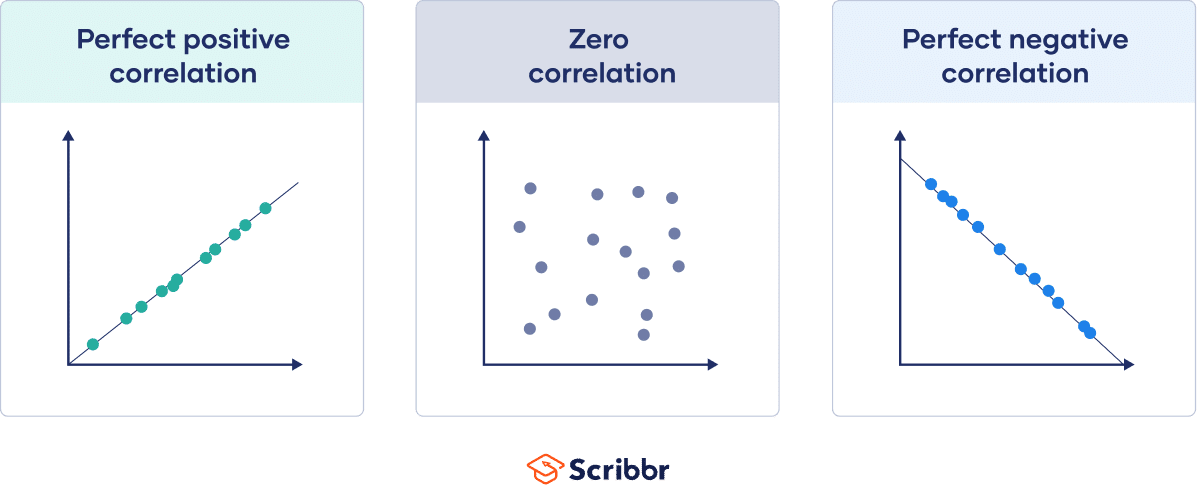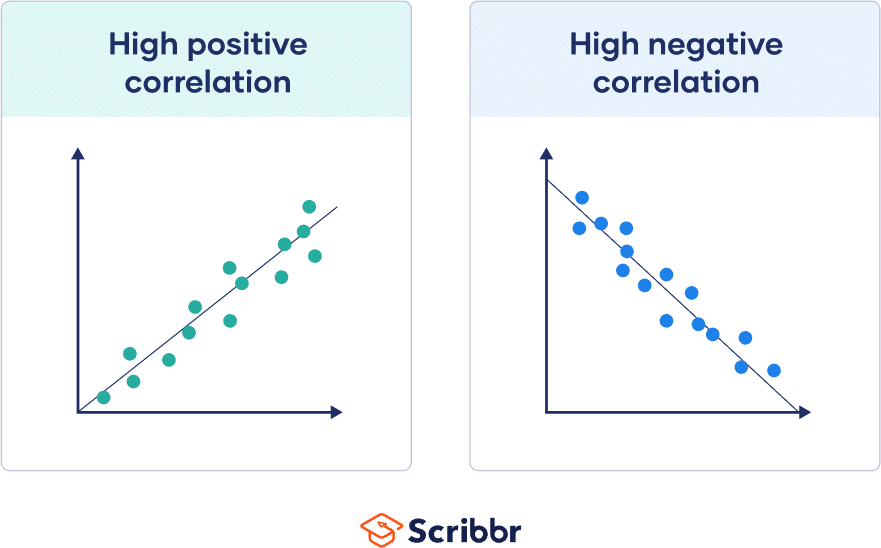Positive correlation is a. Correlational studies are quite common in psychology particularly because.
Correlation Coefficient value always lies between -1 to 1.

. Sum of the squared differences between x- and y-variable ranks. Usually we can use the. The sample covariance between two samples x 1 x n and y 1 y n is a measure of the linear association between two variables x and y based on the corresponding samples and is defined by the formula.
Finally some pitfalls regarding the use of correlation will be discussed. Correlation is a term that is a measure of the strength of a linear relationship between two quantitative variables eg height weight. A positive correlation is a relationship between two variables in which both variables move in the same direction.
Correlation is a statistical measure that indicates the extent to which two or more variables fluctuate in relation to each other. The above graph represents the correlation. The direction of a correlation can be either positive or negative.
Therefore correlations are typically written with two key. We describe correlations with a unit-free measure called the correlation coefficient which ranges from -1 to 1 and is denoted by r. The sample correlation coefficient is typically denoted as r.
How Correlational Studies Work. When the r value is closer to 1 or -1 it indicates that there is a stronger linear relationship between the two variables. A negative correlation means that the variables change in opposite directions.
It is also known as Pearsons r. Statistical significance is indicated with a p-value. Taller people tend to be heavier.
A coefficient of -1 is perfect negative linear correlation. What do correlation numbers mean. This post will define positive and negative correlations illustrated with examples and explanations of how to measure correlation.
N sample size. Correlation Coefficient is a statistical concept which helps in establishing a relation between predicted and actual values obtained in a statistical experiment. If you have a correlation coefficient of 1 all of the.
Researchers use correlations to see if. We can see the patterns and define how linear it is. Its all in the name co as in together relation as.
A straight line trending downward. This ratio is the product-moment coefficient of correlation. If Y decreases as X increases thats a negative relationship.
How they relate to each other. The correlation coefficient indicates the extent to which the pairs of numbers for these two variables lie on a straight line. Correlational studies are a type of research often used in psychology as well as other fields like medicine.
Although correlation technically refers to any statistical association it typically is used to describe how linearly related two variables are. A 1 coefficient is conversely perfect positive linear correlation. Revised on February 10 2022.
The correlation coefficient is a statistical measure of the strength of the relationship between the relative movements of two variables. Therefore when one variable increases as the other variable increases or one variable decreases while the other decreases. The values range between -10 and 10.
This is a value that takes a range from -1 to 1. An example of positive correlation would be height and weight. A correlation reflects the strength andor direction of the relationship between two or more variables.
Therefore the value of a correlation coefficient ranges between -1 and 1. The coefficient of correlation is measured on a scale that varies from 1 to -1 through 0. Its a statistical computation that.
Describe the mean median standard deviation range IQR and correlation coefficient Descriptive vs Inferential statistics. The covariance is similar to the variance except that the covariance is defined for. The calculated value of the correlation coefficient explains the exactness between the predicted and actual values.
The method is also useful if researchers are unable to perform an experiment. The correlation coefficient is 1 in the case of a perfect direct increasing linear relationship correlation 1 in the case of a perfect inverse. A calculated number.
A correlation is simply a measure of how two or perhaps more variables move together. A positive correlation means that both variables change in the same direction. A zero correlation means theres no relationship between the variables.
Apart from a national census it is usually impossible to collect information on everyone in the population for either logistical or cost reasons. In our example its value of 36 indicates a fairly high positive correlation between height and weight in this small sample. Conversely when statisticians use the word association they can be talking about any relationship between two variables whether its linear or non-linear.
A correlational research design investigates relationships between variables without the researcher controlling or manipulating any of them. Answer 1 of 13. Even though correlation cannot be used to.
The degree of association is measured by r after its originator and a measure of linear association. It is a corollary of the CauchySchwarz inequality that the absolute value of the Pearson correlation coefficient is not bigger than 1. Sample covariance and correlation.
Correlation is any statistical relationship between two random variables regardless whether the relationship is causal one variable causes the other or not. A correlation reflects the strength andor direction of the association between two or more variables. Wait lets not be so technical I mean were all friends here.
A negative correlation indicates the extent to which one variable increases as the other decreases. A positive correlation indicates the extent to which those variables increase or decrease in parallel. Correlation is defined numerically by a correlation coefficient.
The difference between the x-variable rank and the y-variable rank for each pair of data. To illustrate this idea consider the following examples. When a p-value is used to describe a result as statistically.
Analysis of correlation is a method to describe the relationship between two different variables. Other complicated measures are used if a curved line is needed to represent the relationship. To summarize the correlation is used to test if a significant relationship exists between two quantitative variables but these variables must be linearly related which.
3 Correlational research is a preliminary way to gather information about a topic. We use two words to describe the correlation between two random. The Negative correlation is the opposite its a relationship between 2 variables which the increase of one variable causes a decrease for another variable.
A correlation coefficient often expressed as r indicates a measure of the direction and strength of a relationship between two variables. Whenever we collect health information it is invariably on a sample. Define the difference between a correlation and a covariance.
/TC_3126228-how-to-calculate-the-correlation-coefficient-5aabeb313de423003610ee40.png)
Correlation Coefficients Positive Negative Zero

Correlation Types Examples What Is Correlation In Statistics Video Lesson Transcript Study Com


0 Comments